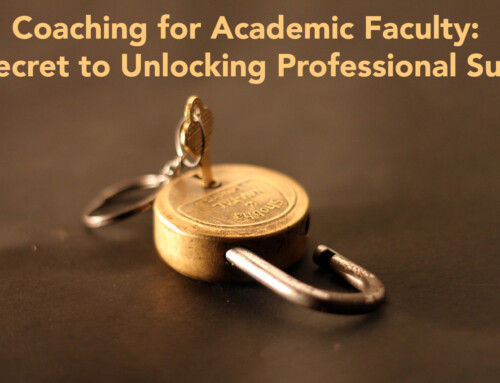The Problem
Emergency medicine (EM) interns begin residency with variable clinical, procedural, and interprofessional skills. Residency leadership can find it challenging to ensure that a new class cohesively transitions into a program and community. Following a 4-week “Intern Boot Camp,” a capstone competition, “Intern Olympics,” was held to emphasize key knowledge and skills for interns.
The Innovation
The Brigham and Women’s Hospital/Massachusetts General Hospital Harvard Affiliated Emergency Medicine Residency (HAEMR) developed an “Intern Boot Camp” that finished with “Intern Olympics.” This capstone competition was modeled after a similar educational innovation developed at NYU by Dr. Adaira Chou. The competition, facilitated by senior EM residents, tests declarative and procedural knowledge from the orientation month.
Target Learners
This competition is designed for incoming EM interns. It can be modified to teach an entire residency at a weekly conference day.
Group Size
At the start of the competition, 15 interns were randomly divided into teams of 3. Each team was encouraged to come up with a clever team name to promote camaraderie and enthusiasm.
Materials Needed
- Resident Volunteers (7)
- Scoring Sheets (6)
- PowerPoint with 20 ECGs
- PowerPoint with 20 Radiology Images
- “Dark Room”
- Rapid Triage Case Examples (20)
- Laptop or Desktop Computers (2)
- Bedside Ultrasound with gel
- PowerPoint for “Name That Teammate”
Description of the Innovation
Interns are randomly divided into teams of 3 and rotate through 5 stations. Each team has 12 minutes to complete a station and 3 minutes in between to prepare for the next challenge. After each team completes 5 stations, the top 2 teams compete for the grand prize. After the competition, interns review answers to the ECG, Radiology, and Rapid Triage questions with senior residents.
Station 1- ECG Extravaganza: Each team simulates an attending experience: a stack of ECGs (20) to review under pressure. For each ECG, the team must state the rate, rhythm, and comment on any abnormalities (which could include abnormal intervals, tachy- or bradyarrhythmias, other ECG findings associated with syncope, or signs of ischemic). There is no partial credit. A senior resident developed this ECG set, and ensured that it matched the lessons from an ECG lecture earlier in the month.
Station 2- Ultrasound:

A team correctly identifies structures in a right upper quadrant view.
Teams must obtain common and important ultrasound images (including cardinal cardiac windows, thoracic ultrasound, eFAST, and biliary structures). Each task was presented with a humorous twist. Teams split the tasks as they saw fit, and were scored based on accuracy, with points given for each structure correctly identified. Those teams that completed the challenge before 12 minutes were given advanced anatomic structures to identify for bonus points.
Station 3- Step Into the Dark Room:

The chief resident office transformed into a radiology suite. Interns review radiology images for key findings.
The Chief Resident office was converted into a radiology suite! Lights off, windows covered, each team worked through 20 radiology questions on a PowerPoint presentation. Images included a mix of chest and musculoskeletal radiography, as well as CT images of brain, cervical spine, and chest. Images were similar to the radiology content introduced during the orientation month. Some images were followed by “next step in management” questions. Answers were placed on a scoring sheet.
Station 4- Code Help! Rapid Triage: New interns can find triage processes confusing as they begin to learn the basics of ED operations. To review this topic, each team discussed 20 patient scenarios, which included a chief complaint, vital signs, and only 1 or 2 points from HPI. The team would then quickly decide which available treatment area would be the most appropriate triage disposition.
Station 5- Overnight and Alone: Stockroom Scavenger Hunt: Ready, set, go! Each team raced to find 20 items in an ED supply room. A senior resident served as a timekeeper and ensured that interns found items in the presented order, as each item was increasingly esoteric and difficult to find. Items included supplies for an ultrasound-guided IV, ABG kits, soft suction, and coude catheters.
Final Challenge- Name That Teammate!: EM is a team sport – and knowing the names of your teammates is critical! Pictures of co-residents, PAs, attendings, and residency administrators quickly flashed across a large TV screen. The top 2 teams had only seconds to review each photo and write down the name of each person on a scoring sheet as classmates and co-residents cheered them on. The winning team was presented with a set of sheers and bragging rights for the rest of the year.

The winning team celebrates their victory with volunteer residents.
Theory Behind the Innovation
Intern Olympics was developed to serve as a team-building exercise and capstone session for the orientation month. It used experiential learning to reinforce concepts and skills introduced in the classroom and on shift. After the competition, learners had an opportunity to review answers, which may modify future behavior and practice. The innovation applied the theory of competition-based learning, which suggests that (friendly) competition can augment learner motivation and encourage retention.1 Interns overwhelmingly provided positive feedback.
Lessons Learned
- In the future, it would be ideal to have an additional 1 or 2 residents to help with scoring the stations and serve as back-up in case of an unanticipated absence.
- Interns reported an interest in learning the topics the night before as a “sneak preview.” This may have the added benefit of encouraging self-directed study.
- Each team won 1 session. As the organizers did not plan for a tie, the result required quick brainstorming as to the tie-breaker. Ultimately, it was decided to select the 2 teams that were never in last place to compete in the final challenge.
- 4 of 5 teams completed the scavenger hunt quickly with several minutes to spare. To increase the difficulty of the challenge, asking each team 2 or 3 questions about the supplies could be incorporated.
Read more about the IDEA Series.





